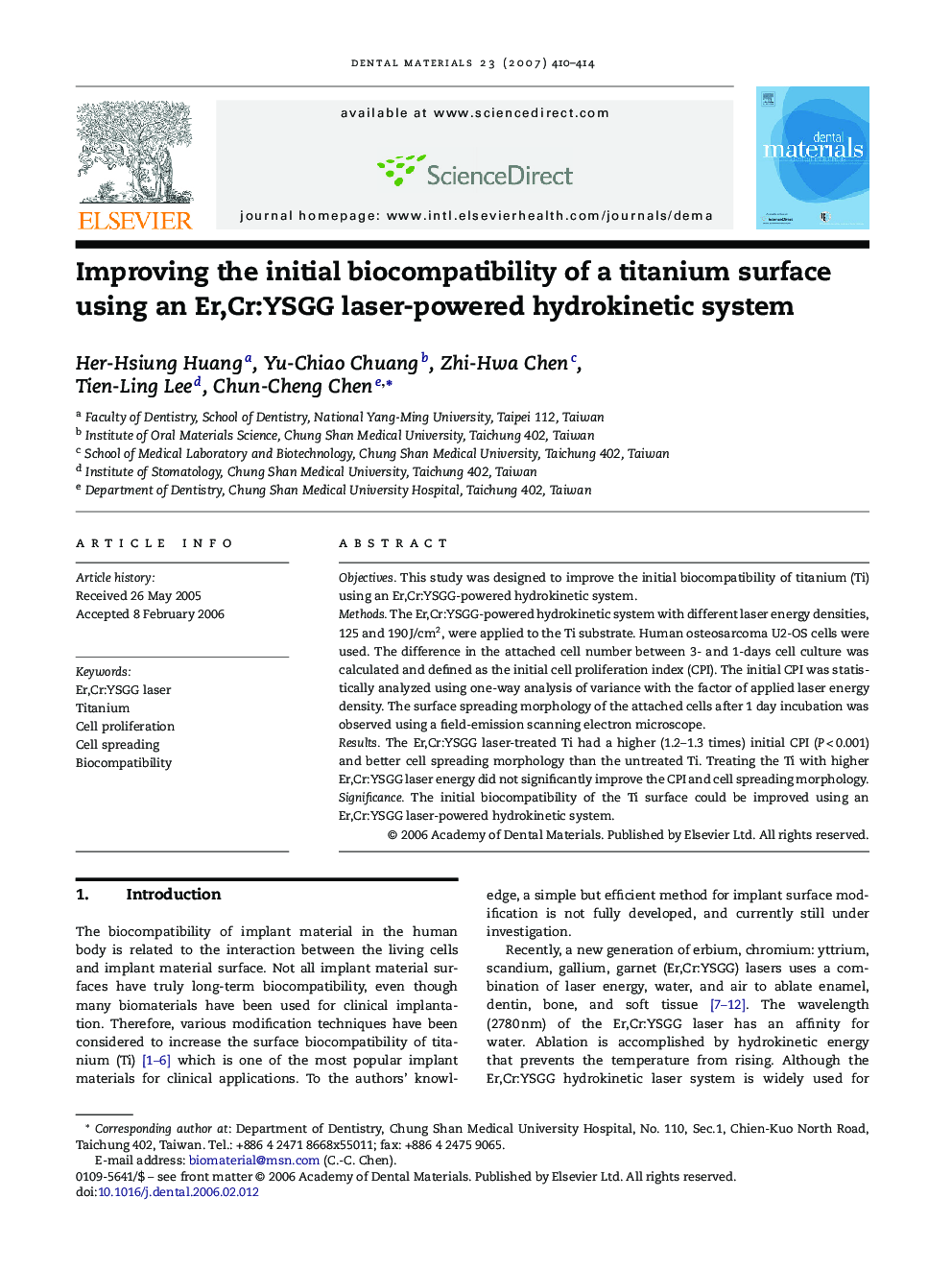| Article ID | Journal | Published Year | Pages | File Type |
|---|---|---|---|---|
| 1423154 | Dental Materials | 2007 | 5 Pages |
ObjectivesThis study was designed to improve the initial biocompatibility of titanium (Ti) using an Er,Cr:YSGG-powered hydrokinetic system.MethodsThe Er,Cr:YSGG-powered hydrokinetic system with different laser energy densities, 125 and 190 J/cm2, were applied to the Ti substrate. Human osteosarcoma U2-OS cells were used. The difference in the attached cell number between 3- and 1-days cell culture was calculated and defined as the initial cell proliferation index (CPI). The initial CPI was statistically analyzed using one-way analysis of variance with the factor of applied laser energy density. The surface spreading morphology of the attached cells after 1 day incubation was observed using a field-emission scanning electron microscope.ResultsThe Er,Cr:YSGG laser-treated Ti had a higher (1.2–1.3 times) initial CPI (P < 0.001) and better cell spreading morphology than the untreated Ti. Treating the Ti with higher Er,Cr:YSGG laser energy did not significantly improve the CPI and cell spreading morphology.SignificanceThe initial biocompatibility of the Ti surface could be improved using an Er,Cr:YSGG laser-powered hydrokinetic system.
